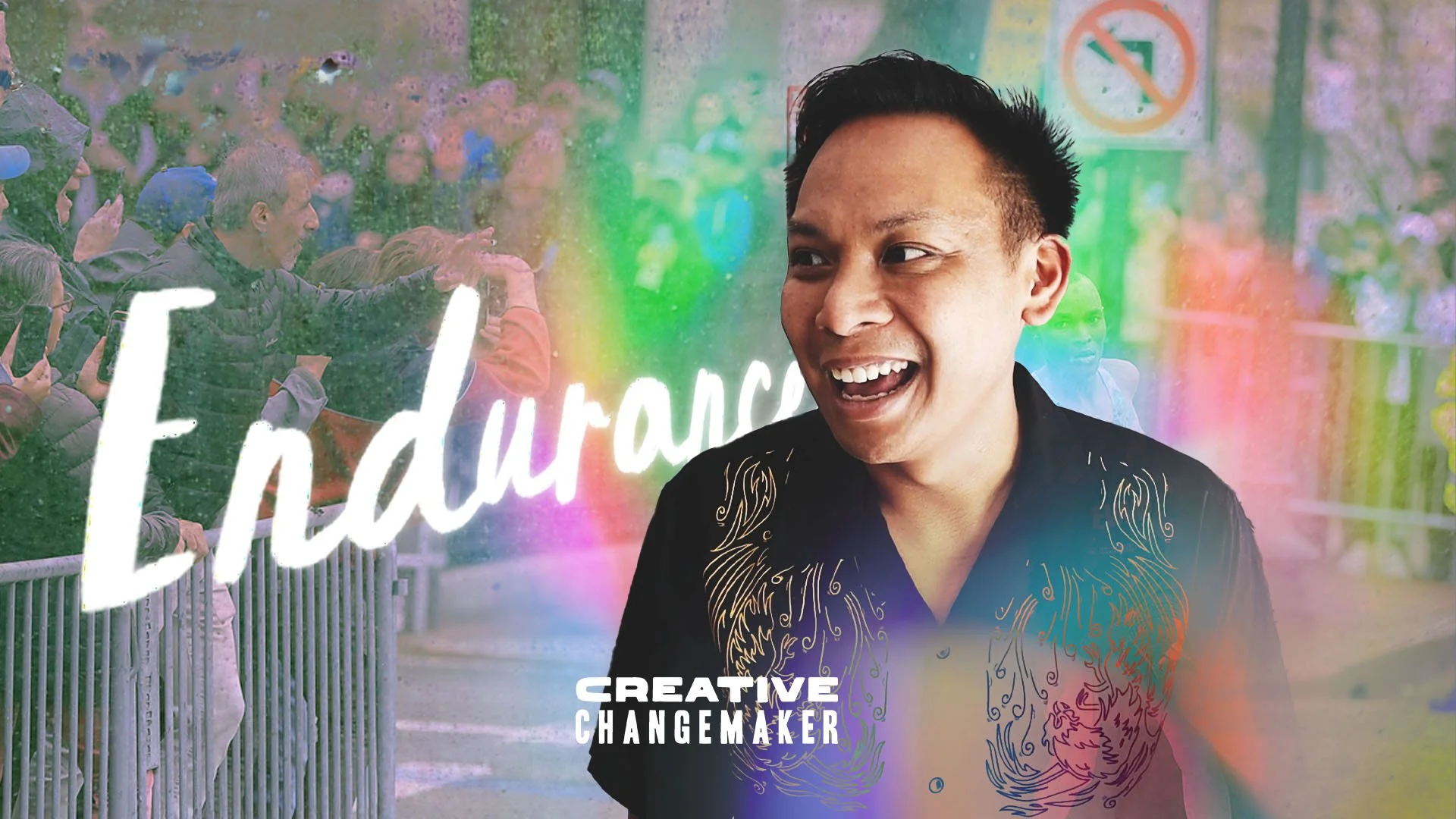Marathon lessons on creativity
I’ve been training for a marathon for the better part of a year, but now that it’s a month away, I’m at the part of training where it starts to take over my life. When training calls for an 18+ mile run, it means you’re needing to set aside a whole day. Hours to run, and anticipating slugging about the rest of the day with whatever little energy remains.
This stage of training has been a surprisingly good source of creative lessons. Or maybe that shouldn’t be too surprising. When you’ve passed the half-marathon mark and it looks like the mileage ahead of you is greater than your energy reserves, you get real creative with what you tell yourself and where you let your mind go to push on ahead.
Endurance has been the theme of everything lately, at least for me, and endurance is essential to the work of a Creative Changemaker.
If you set yourself up to tackle major issues, to reverse generational problems, then you should accept that the change you seek isn’t an overnight solution. It’ll take the long work of shifting perceptions and moving tides, and that calls for endurance from you.
When the work is a slog, progress feels slow, and the road ahead only reminds you of how much distance there is between where you are and the finish line, the creative act of reframing your situation, redefining success, and renewing your commitment to keep moving ahead, you discover the reminders you need the most.
As I’ve been honing the art of endurance, here are the choices I’ve found to be the most helpful.
1) Find a Mantra, Find that Motivation
You may have already heard this from people who run distances, but a popular way to find energy mid-race is to find a mantra to repeat to yourself. A string of words that bring the motivation back.
Sometimes they’re things like self-affirmations. Sometimes they’re reminders to yourself of why you’re doing this.
Funny enough they don’t always even need to make sense.
I’ve heard from one runner who repeats to himself, “I love you, Krista,” thinking of his daughter along the way. It’s reasonable, until he shares that “I love you, Julie,” his other daughter, doesn’t quite work for some reason, even though he really does love Julie too. It feels forced, he says. It’s evidence that mantras don’t exactly play to logic and our reasoning skills.
A phrase I often find myself repeating is “run to win.” That definitely doesn’t make sense as I don’t have the speed that makes winning plausible. But it keeps me going.
I do think of where mantras come from, Eastern spiritual practices designed to help ground people in meditation or focus. They aren’t meant to be nuggets of information to mull over, they’re meant to pull people out of their thoughts and towards center.
When I’m running and I say “run to win” despite maybe finishing 60th, it’s more so to resettle my thoughts and give my own motivation a little push.
I think there’s a relationship between this dynamic and the way art, music, stories and other more abstract expressions can play a role in catalyzing social change. There’s more to creating change than rationalizing our way to a more just world. Providing the rallying cries and beats to march to is critical work.
2) Identify Wins Along the Way
A marathon, or even a long-distance training run, is such a long stretch that it’s not always helpful to be thinking of the finish line and or as a 26.2 mile clump. Instead, it often helps to think of it as a run made up of a bunch of different runs put together.
Running 42 kilometers is a lot. But maybe you can run five. Then five more. Then do that all again. At that point you’re just about halfway to a marathon, and eventually, start with five turns into just five more.
I do my running at a lake that has an almost an even five mile perimeter. It makes calculating distances really easy. A twenty mile run calls for four laps around, and so I’ll have different aims for each of those laps.
Typically the first lap is all about getting into a good groove. The first couple miles might be where I need to shake off some soreness that will no longer be felt by mile five. The priority there is feeling good.
My second time around the lake is typically where I try to focus on going faster. I’ll still have enough energy to turn up my speed. On later laps, it’ll be much harder to tap into.
My third time around I typically try and enter a more meditative state. Maybe that’s euphorically running to some music or allowing my mind to process something more in-depth. Anyways, it’s a time where I might rely more on diverted thinking in order to not notice my energy dip.
The times I take a fourth lap, I’d be so energy drained that there can be only one goal. Finishing. Getting to the other side. The end of a marathon is typically more of a willpower test than a physical one, so that’s where it gets put into practice.
Taking on each portion of a very long run a little bit differently reminds me of the “how do you eat an elephant proverb?” Spoiler: The answer is one bite at a time and has not-so-much to do with the consumption of protected species. The idea is that dividing up a major endeavor into smaller, attainable wins and areas of focus can make it a lot more manageable.
Identify your wins, string a few of them together, and you’ll wind up making some pretty good progress towards the ultimate goal.
3) Love the Process
Finally, if there’s any sort of big task, challenge, or endeavor that you wish to commit to, then I can think of no better reminder than to simply love the process.
You can’t be simply driven by visions of your big finish. For starters, the finish represents such a small sliver of the overall experience, and by the time you get there, by definition, it’s all over.
On top of that, some of us are working towards aims that will outlive us. For many of us, the work will always be there. There will always be more miles ahead.
"Do not be afraid of work that has no end,” Avot de Rabbi Natan said once, and to me, pursuits like racial justice, health equity, and the end of poverty fall into that camp. You have to fall in love with the act of showing up each day.
One of the best ways to one day run 26.2 miles is to become the sort of person who learns how to love running one mile. Who can’t wait for the opportunity to run a mile. The kind who runs one and can’t wait to run another. When you have that going for you, going the distance becomes natural.
Endurance is a creative act. It’s full of reframing and learning to see yourself and your work in a different way. Doing work to solve problems and reverse cycles of inequity is a marathon of sorts. It’s why Nipsey Hussle was always saying “the marathon continues” and he was right. Creative Changemakers are bound to run into instances where giving up seems appealing, and when the next steps feel daunting. But if you develop these instincts, you’ll know how to call on to extra endurance when the situation requires it.







